In past blog posts, this series on the Digital Solutions Economy (DSE) has discussed Entitlement Management, Integrating FP&A with DSE, Implementing Anything-as-a-Service (XaaS), DSE and RevRec Compliance, DSE Data Volume, Velocity, Density and Complexity, Embedded Analytics for DSE, and much more.
This new episode moves into focusing on how various industries are being impacted by the overall shift to subscription-based DSE offerings - starting with a look at the utilities segment.
A Brief History:
Utilities are the original subscription and consumption based business model with rate payers signing up for accounts and then being billed based on their usage.
For the past 120 years, the utilities industry has been viewed as fairly stable, with preset rate schedules that were only changed infrequently and with little or no dynamic control from rate payers. The typical paradigm was "one rate for everyone, all the time" regardless of the time of day or other factors. And only until recently, they were a monopoly.
From an infrastructure perspective, utilities also have tended to be very capital intensive, with long term CapEx investment horizons and relatively stable physical plant facilities. The distribution systems, such as electrical wiring, natural gas pipelines, water mains, sewer collection systems, etc., were typically designed to handle a predicted range of demand and problems would occur whenever those predicted patterns were significantly exceeded. For example, extreme heat waves place great stresses on existing electrical grids.
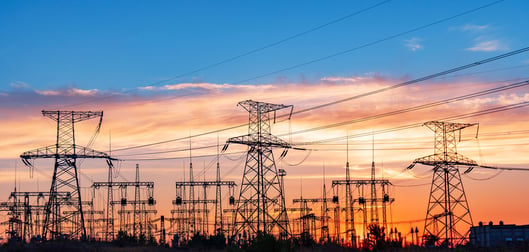
The traditional ways to deal with peak demands that exceed capacities would be to either cut back on usage (such as mandated brown outs) or fire up fossil fueled power plants to provide more electricity. Specifically with electrical grids, fluctuations in demand require more power plant output because existing power grids do not have in-grid storage capacity. But now… "times they are a changing…" and the advent of competition, de-regulation and other factors are shaking the industry to its core.
Industry Trends and Driving Factors for Change:
Today, the utility industry is experiencing multiple waves of disruptive forces that are driving the need for transformational change. Some of these major trends include:
- Advanced Metering Infrastructure (AMI)
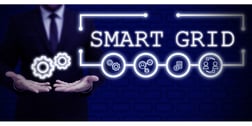
Over recent decades, most utilities have been adopting digital solutions that eliminate the need for manual meter reading by using remote Internet-of-Things (IoT) smart meters. In addition to automatically collecting data for usage and billing, the growing networks of IoT devices also can provide alerts for tampering, theft, or out of parameter issues such as over-temperature, backflow of water, etc. 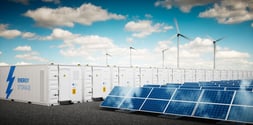 Transition to Renewable Energy Sources
Transition to Renewable Energy Sources
Driven by increasing concerns over climate change, government mandates and consumer activism, electrical utilities are under pressure to transition their power generation sources to "green energy" renewables. As they move away from using fossil fuel power plants to meet peak usage demands, utilities must grapple with the need to incorporate more storage capacity into grids so that electricity generated from renewables can be captured for later usage.- Rise of Electric Vehicles
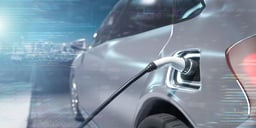
One of the biggest impacts on electrical utilities is the rapid adoption of electric vehicles (EVs) that need to be charged. Not only is overall demand for electricity going up; the rise of smart-charging applications for EVs requires agility from utilities to enable automated off-peak charging. This gives consumers the ability to take advantage of lower rates such as charging in the middle of the night when demand is low. The innovation of two-way charging interfaces actually enables EVs to act as connected storage for the grid and gives rate payers the ability to sell back electricity to the utilities to meet peak demand spikes. Also, the rise of public charging stations in shopping centers, industrial parks and other locations is creating new partnerships between utilities and charging service companies, that require both two-way communications and shared revenue accounting. As discussed below, these EV related consumer and commercial applications will have significant impacts from a DSE perspective. - Empowering Subscribers with More Choices

In addition to giving consumers more control over their EV charging processes, utilities are leveraging smart metering and two-way grid capabilities to expand choices and improve rate payer experiences. Capabilities such as remote control of smart home applications, selling solar electricity back into the grid, advanced usage analytics, off-peak discounts, and other features are becoming important aspects of the new digitally transformed relationships between utilities and rate payers. - Evolution of Carbon Accounting ESG Requirements
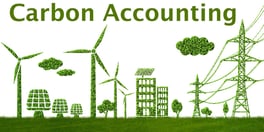
Amid all the above described changes, utilities are also grappling with how to manage their carbon footprints and collect data to comply with emerging Environmental, Social and Governance (ESG) requirements for carbon accounting. In addition to tracking and reporting the carbon footprints for their power generation and distribution activities, utilities are also deeply involved in the new climate related markets for buying and/or selling carbon credits.
How the Digital Solutions Economy Helps Manage These Changes:
As detailed in previous DSE-related blog posts, companies need to take a holistic approach to addressing the full end-to-end cycle of DSE processes, from the Customer Engagement interface, through Order Management, Delivery, Billing & Invoicing, Payments & Collection, and Revenue Management.

Building on leadership in both compliance management and the Digital Solutions Economy, Bramasol is already working with a wide range of companies that are implementing DSE offerings, including helping utilities navigate the waves of change described above.
Some of the specific areas of focus include:
- Integrating legacy billing systems into the holistic flow for DSE processing
- Managing complex multi-element usage with a goal of simplifying user statements
- Implementing dynamic billing processes
- Managing energy sell-back, discounts and other credits against usage charges
- Managing revenue sharing with third parties, such as EV charging station providers
- Compliance reporting for revenue recognition
In addition, as a leader in addressing compliance requirements, Bramasol is at the forefront of helping utilities and other companies get ready for emerging carbon accounting compliance mandates.
Although utilities currently find themselves in the middle of multiple disruptive change trends, there are significant opportunities embedded along with the challenges. Successfully addressing these digital transformation issues will not only make utilities more efficient and profitable; it will also help make our world more sustainable and improve quality of life.

